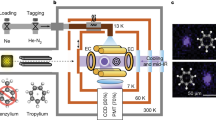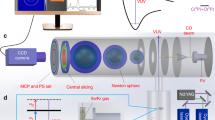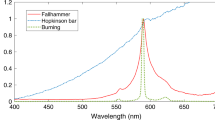Abstract
DR. H. SPONER, in an article published some time ago (Zeit. f. Phys., vol. 34, p. 622; 1925), advanced the hypothesis that active nitrogen is simply an atom of nitrogen, basing her argument on the parallel properties of active nitrogen and active hydrogen. The hypothesis seems to have found favour with many physicists. Now it is known that active hydrogen shows Balmer lines strongly, and if active nitrogen is also atomic in structure, this may also show the lines of atomic nitrogen. In order to test this point we have photographed the spectrum of active nitrogen in the near infra-red, after an exposure of 42 hours on neocyanine plates. A new band system, extending from 7500 A. to 8900 A., has been discovered. The well-known group of lines of atomic nitrogen discovered by C. C. Kiess (J.O.S.A., vol. 11) about the region 8200 A. is absent, though the exposure was long enough to photograph a weaker band in the vicinity.
This is a preview of subscription content, access via your institution
Access options
Subscribe to this journal
Receive 51 print issues and online access
$199.00 per year
only $3.90 per issue
Buy this article
- Purchase on Springer Link
- Instant access to full article PDF
Prices may be subject to local taxes which are calculated during checkout
Similar content being viewed by others
Author information
Authors and Affiliations
Rights and permissions
About this article
Cite this article
KICHLU, P., ACHARYA, D. Active Nitrogen. Nature 121, 982–983 (1928). https://doi.org/10.1038/121982b0
Issue Date:
DOI: https://doi.org/10.1038/121982b0
Comments
By submitting a comment you agree to abide by our Terms and Community Guidelines. If you find something abusive or that does not comply with our terms or guidelines please flag it as inappropriate.



